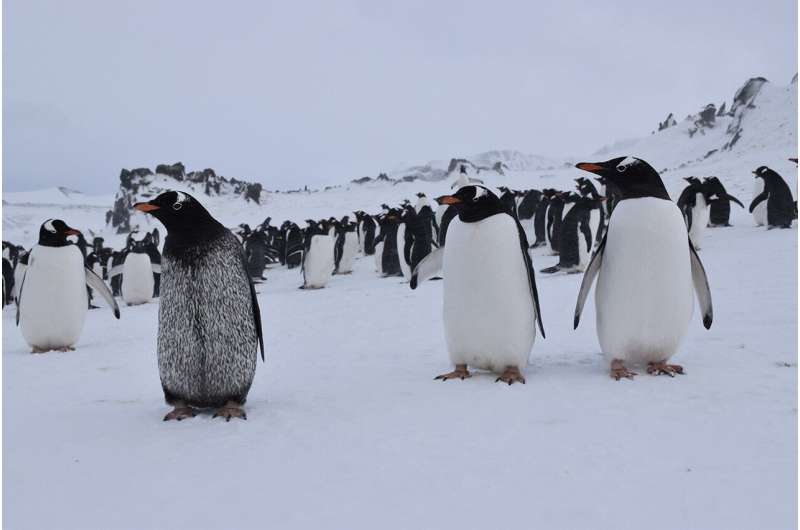August 29, 2023 report
This article has been reviewed according to Science X's editorial process and policies. Editors have highlighted the following attributes while ensuring the content's credibility:
fact-checked
trusted source
proofread
A case of melanism found in a wild gentoo penguin living in Antarctica

A small team of team of biologists affiliated with several institutions in Argentina has found an instance of melanism in a wild gentoo penguin living in Antarctica. In their paper published in the journal Polar Biology, the group describes the specimen they observed and possible reasons for its coloring.
Gentoo penguins living on Antarctica's Hope Bay, on the tip of the Antarctic Peninsula, typically have black coloring on the tops of their wings and white coloring underneath. Likewise, they are typically all black on their backs, while their fronts (except the head) are generally bright white. This appearance, as with other penguins, gives them the look of wearing a tuxedo.
Prior research has shown that the reason for the coloring is to help the birds avoid predators when they are in the water. Those above them will have difficulty making out the dark of their backs from the dark of the ocean below, and those below them will have difficulty distinguishing their white fronts with the sky above them. However, sometimes mutations can occur, resulting in abnormal coloring.
In this new study, the research team has found an example of a gentoo penguin with melanism, which means that some of its traditionally white front and underwing feathers are instead dark, giving it a speckled look.
The observation is not unheard of—another team spotted a king penguin with the same condition in 2010, though in that case, the excess melanin resulted in a front that was nearly as black as the back. In this more recent observation, the research team found no evidence of the extra coloring on its white front making the penguin any more susceptible to predators—and it did not seem to bother the other penguins in its colony. They were not able to confirm its gender, however, or its breeding status; thus, it is not known if the unusual coloring makes it difficult for the penguin to find a mate.
The researchers note that prior research has suggested that melanism likely occurs in approximately one in 250,000 penguins, based on its rate of occurrence in other animals.
More information: Rocio Nigro et al, A case of melanism in a Gentoo Penguin (Pygoscelis papua) at Esperanza/Hope Bay, Antarctica, Polar Biology (2023). DOI: 10.1007/s00300-023-03190-0
© 2023 Science X Network





















